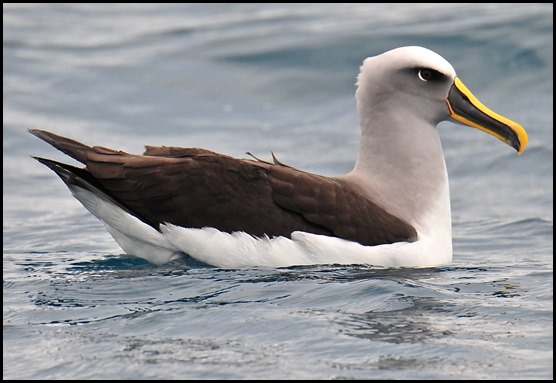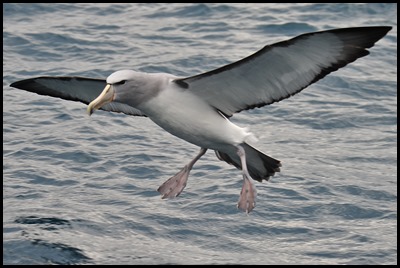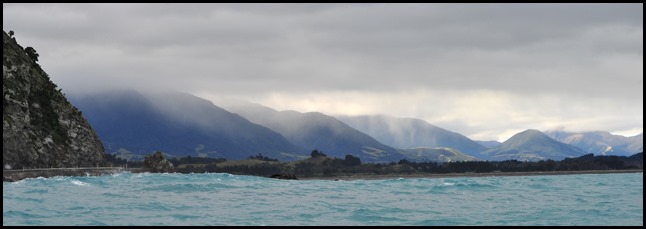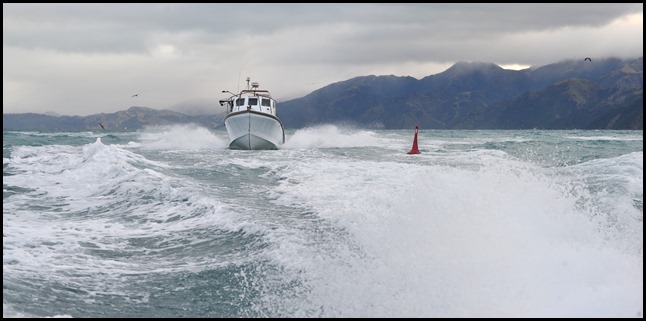The Albatross

|
Albatross Encounter
 We met our guide, Gary Melville at
Albatross Encounter, my late birthday present from Big Bear. Gary is a local
expert and we were lucky he was not out with a conservation party today. He is
off to Birdfair in Rutland next month. He drove us, a Kiwi and a couple from
Denmark the ten minutes to South Harbour. A first for us was to be loaded onto a
solid aluminium rib.
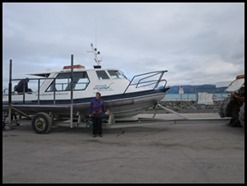 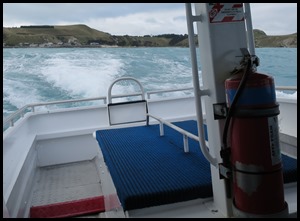 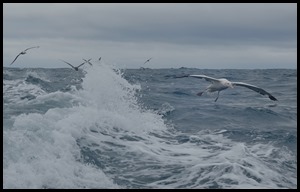 Tractored to
the waters edge, launched and off. No sooner than we
got up to speed then we had visitors.
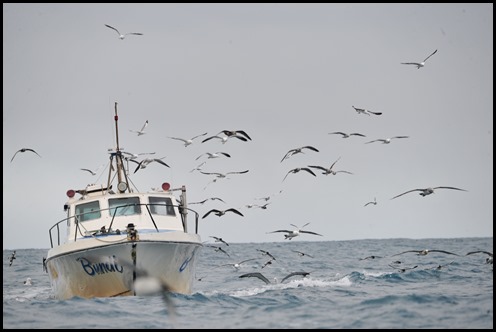 We caught up to a
fisherman.
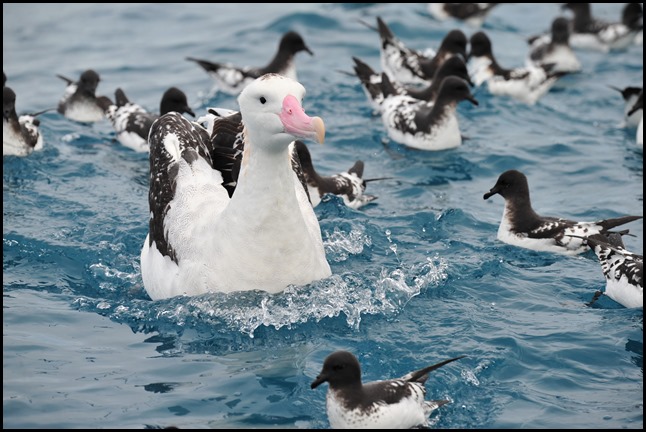 His birds came over to see
us.
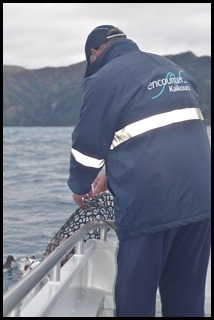  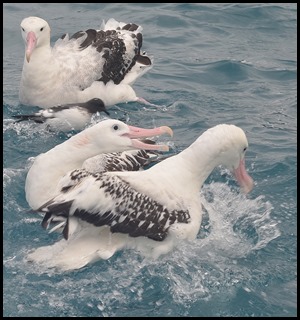 Now in deep water, Mike stopped,
loaded a towing bag full of food, the teenage
wandering albatross squabbled for first dibs.
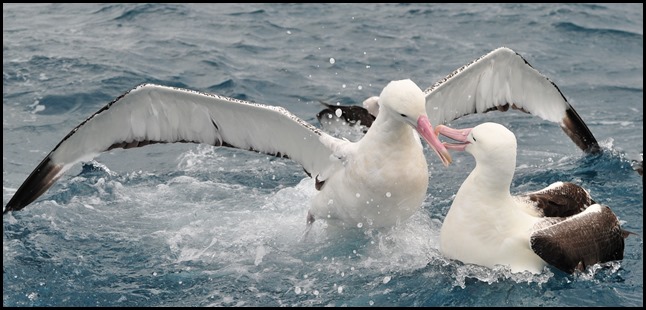 Silent
pushing rather than injury making.
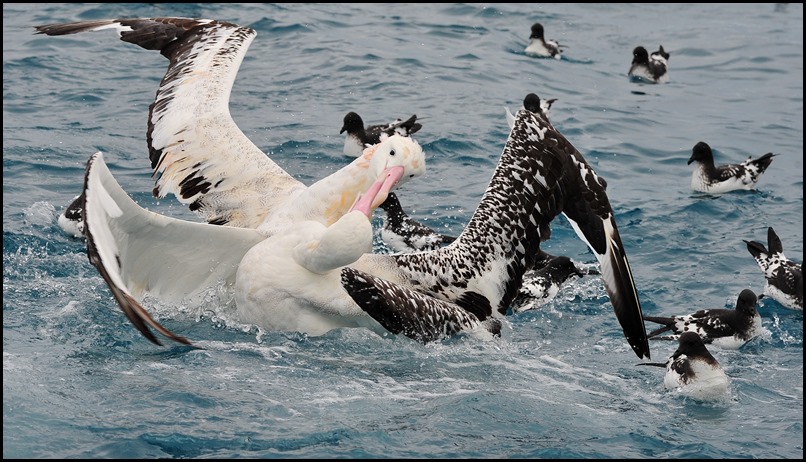 When the other chap reacted, we
thought oooo, but all over in a few
seconds.
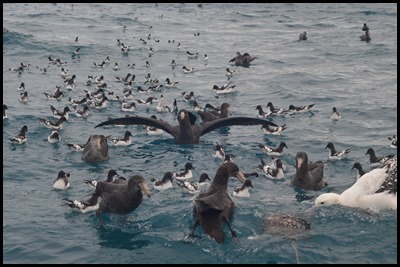 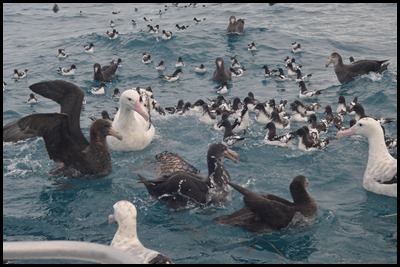  Within minutes it was like a scene
from Birds, wandering albatross, giant petrels and many Cape
petrels.
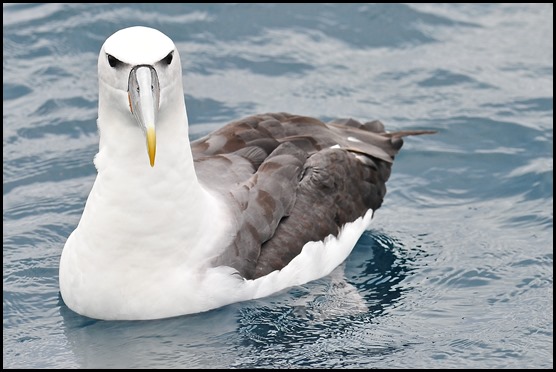 The black-browed albatross is medium-sized, at 31–37 inches long with a 79–94 inch wingspan and an average weight of 6.4–10.4 pounds. It can have a natural lifespan of over 70 years, mate for life and mate every other year. It has a dark grey saddle and upperwings that contrast with the white rump, and underparts. The underwing is predominantly white with broad, irregular, black margins. It has a dark eyebrow and a yellow-orange bill with a darker reddish-orange tip. Juveniles have dark horn-coloured bills with dark tips, and a grey head and collar. They also have dark underwings. The features that distinguish it from other mollymawks (except the closely related Campbell albatross) are the dark eyestripe which gives it its name, a broad black edging to the white underside of its wings, white head and orange bill, tipped darker orange.
Buller's albatross or Buller's mollymawk, Thalassarche bulleri, is a small, snooty-looking mollymawk in the albatross family. It breeds on islands around New Zealand, and feeds in the seas off Australia and the South Pacific.They were named after Walter Lawry Buller KCMG (9th of October 1838 – 19th of July 1906) who was a New Zealand lawyer, naturalist, and dominated in the field of New Zealand ornithology. His book, A History of the Birds of New Zealand, first published in 1873, was published as an enlarged version in 1888 and became a New Zealand classic.
The Salvin's albatross is about thirty five inches tall and eight feet four inches across the wings. It weighs between seven and ten and a half pounds and is, alongside the shy albatross, the largest of the mollymawk or small albatross group. The adult bird has a silver-grey crown. Its face, upper throat, and upper mantle are grey, and its back, upperwing, and tail are grey-black. It has a white rump and underparts with a black thumbmark on underwing and black narrow leading and trailing edges on the wing and black wing tips. Its bill is pale grey-green with a pale yellow upper ridge, and a bright yellow tip on the upper mandible, and a dark spot on the tip of the lower mandible. The juveniles have more extensive grey areas and a blue-grey bill with black tips on both mandibles. It can be distinguished from the Chatham albatross by its larger size and grey bill, and from the shy albatross by the greyer head. Named by Lord Lionel Walter Rothschild for the distinguished ornithologist Osbert Salvin, FRS (25th of February 1835 – 1st of June 1898) who was an English naturalist, ornithologist, and herpetologist best known for co-authoring Biologia Centrali-Americana (1879–1915) with Frederick DuCane Godman. This was a fifty two volume encyclopaedia on the natural history of Central America.
We were very lucky to see one Southern Royal Albatross, this shy and beautiful bird has a length of forty four to forty eight inches and a mean weight of nineteen pounds. Males are about four to six pounds heavier than females. Average wingspan has been reported from nine and a half to ten and a half feet, with an upper limit of about eleven and a half feet. Bear described identifying this chap as the one with the very white fuselage. No comment. Feeding: The southern royal albatross eats squid and fish, with smaller amounts of carrion, crustaceans, and salps. Its foraging activities normally take place within an eight hundred mile radius of their breeding site. Reproduction: They prefer to nest on tussock grassland, plateaus, or ridges, and will lay one egg biennially. This will normally take place in November or December. Both parents will incubate the egg, and rear the young. There is very low mortality rates of the layed eggs once the parents settle in. When feeding the young they will range south to the Campbell Plateau and north to the Chatham Rise.
All too soon it was time to head back. Gary skirted the shore and we got a different view of the mountains.
Have you had a good time ??? – OH YES, thank you.
The black sand showed up the gulls meeting.
We swooped in, just in front of a local fisherman. Loaded back on to the tractor, back in the minibus and back to base. Gary gave us a photocopy of his tick sheet, most prized of course was the eight different albatross, some too close for us to differentiate. The ladies offered us a choice of colours – a pair of merino sheep wool socks. Fantastic.
ALL IN ALL MORE THAN WOW, SUCH A TREAT STUNNING, TO BE SO CLOSE TO THESE AMAZING BIRDS |
